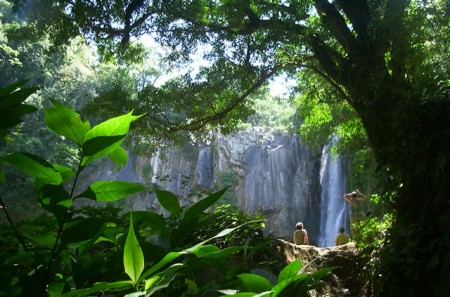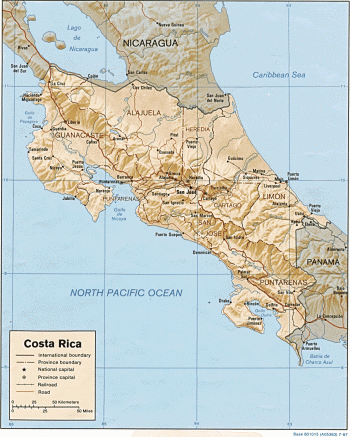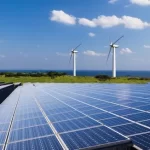November 24, 2015 – When Costa Rica submitted its carbon reduction plans to the United Nations in advance of COP 21 at the end of this month, the country described itself as “a laboratory for the world’s economy deep de-carbonization process.” In its plan the country committed to becoming carbon neutral by 2021. And just to prove it could do it, this relatively poor nation of 4.5 million managed to supply almost 99% of its energy requirements using domestic wind, geothermal, solar, biomass and hydroelectricity sources over the last 180 days of 2014 and the first 75 of 2015. The country’s target goal for the rest of 2015 is to at least achieve 97.1% of its energy requirements from non-fossil fuel sources. No other nation is even close to these types of milestones.
Although poor, with an average annual income of $6,810 U.S., the country does have some natural advantages to let it achieve almost carbon-free power generation. Its geography is mountainous. It gets significant rainfall which means lots of rivers and vertical drops. And it has a vast geothermal well of capacity with a series of volcanoes running down the centre spine of the nation. That means lots of natural power generation latent capacity. Now add a high sunshine per square meter capacity and you have a recipe for renewable self-sufficiency.
The country’s goal is to be carbon neutral by 2021. It already has set aside 25% of its forest canopy as a permanent eco-preserve. Its government has a 115-year history of green energy investment, largely hydroelectricity, and since the 1990s it has been one of the most active contributors to making the world aware of climate change and its implications. Its Environmental Services Payment program is a leading market mechanism for forest conservation. Today the country boasts 52.4% forest coverage. That’s more than an 800 million ton carbon sink of which 52% is contained underground, and a significant bank of carbon credits that high carbon emitting nations and industries can purchase. Its forests are also a primary eco-tourism attraction.
The country has included in its plans an Adaptation to Climate Change component. It intends to have a full road map in place by 2018 which will include strengthening conservation programs, and expanding Environmental Services Payment to include ecosystem-based adaptation, further development of agro-forestry, watershed management, a commitment to more renewable energy development, enhanced food security, and improvements to infrastructure to deal with rising sea levels and extreme weather events. Education and citizen participation are planks in the adaptation strategy.
The focus on driving down emissions is aimed at the following industry segments: transportation, solid waste management, energy production and agriculture. Sector by sector dialogues have brought together the country’s key stakeholders to come up with a game plan. In transportation this includes construction of a nationwide network of electrified rail to connect the nation’s cities and towns. In energy the goal is to phase out the last fossil fuel sources for producing electricity. As of the fall of 2015 this represents less than 2% of the country’s energy generating capacity and mostly serves as a backup to renewables. In agriculture the country is looking at providing financing mitigation efforts with payment rewards, carbon auctions and micro credits. A national low carbon livestock strategy is being applied to both the beef and dairy industry with a number of pilot programs designed to reduce greenhouse gas emissions. Solid waste is Costa Rica’s third largest emissions source and therefore the target of a low emission urban strategy focused on improving transportation, management and achieving sustainability through recycling, organic composting and other forms of waste segregation.
Costa Rica has been measuring the impact of climate change on the country. Extreme rain and drought has resulted in growing economic losses. In 2011 these amounted to $1.3 billion U.S. over the previous six years, impacting roads, power distribution, agriculture and housing. Trend analysis suggests that by 2030 losses will grow to $7 billion and by 2050, $30 billion. The rural poor will be the most vulnerable. This is one of the principle reasons for developing a National Adaptation Plan. with ten priorities:
- biodiversity
- agriculture
- water
- coastline
- fishery
- health
- infrastructure
- energy
- tourism
- cities
If the past 30 years are a measure of what Costa Rica can do in the future, the country should remain the model for others seeking a sustainable low-carbon future. The best example is how Costa Rica turned around rampant deforestation over those past 30 years with coverage growing from 26% to 54.4% in 2013. Costa Rica’s forest coverage goal by 2030 is 60%.
















